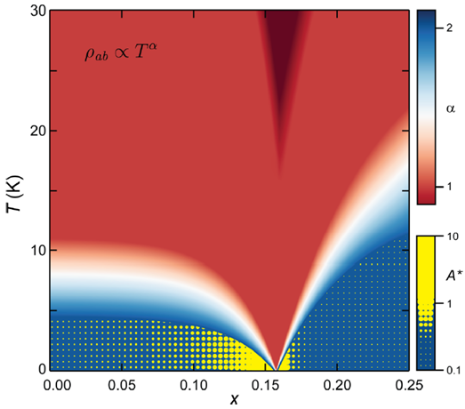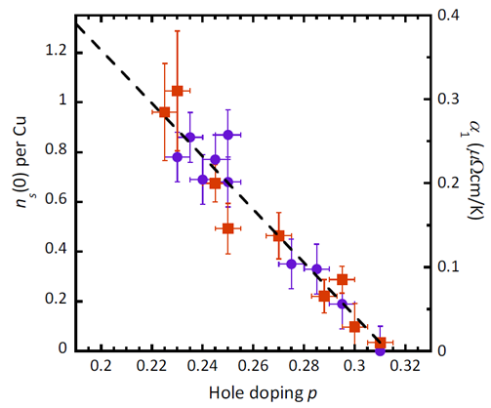Hussey group
Research Interests & Activities
My research group focuses of the novel transport and thermodynamic properties of low-dimensional metals and unconventional superconductors (Quantum Matter). We study the magnetotransport properties of these novel materials using both in-house cryogenic magnet systems and various international facilities, such as the European Magnetic Field Laboratory. Much of the work is on so-called strange metals and quantum critical metals.
Strange metallicity in cuprate superconductors
It has long been recognized that the key to unlocking the mystery of cuprate high-Tc superconductivity lies in understanding the anomalous normal state from which pairs form and condense. While many of its defining properties – linear-in-temperature resistivity, linear-in-field magnetoresistance (MR) at high fields, quadratic-in-temperature inverse Hall angle and modified Kohler's rule – have been identified, their relation to each other and to the pseudogap, strange metal and non-superconducting regimes that define the cuprate phase diagram has yet to be elucidated. Our group uses high-field magnetotransport measurements to delineate all three regimes and compare these results for both electron- and hole-doped cuprates. This ongoing work is helping to establish a unique dual character to the cuprate strange metal, one that appears to be intrinsically linked to the evolution of the superconductivity in these fascinating compounds (see figure opposite showing the correlation between the superfluid density ns(0) and α1 – the coefficient of the T-linear resistivity.
Quantum critical metals
Away from the cuprates, we also study the transport properties of several candidate quantum critical metals, such as the iron pnictides or chalcogenides. Quantum criticality is a unifying concept in correlated electron systems, whereby a phase transition is tuned to zero Kelvin by adjusting a non-thermal control parameter such as pressure, magnetic field or composition. In the region near the end point of this transition, there will be zero-point and thermal fluctuations of the order parameter that give rise to enhanced masses of the conduction electrons (indicated in yellow in the figure opposite) and unconventional forms of transport, typified by a linear-in-temperature resistivity that extends down to anomalously low temperatures (indicated in red in the figure opposite). In our group, we use high magnetic fields to suppress the superconductivity in these candidate quantum-critical metals and follow the T-dependence of the resistivity ρ(T) down to the lowest temperatures possible, providing definitive tests of the role of quantum critical fluctuations on the charge transport.

One-dimensional metals
When electrons are confined to propagate along a single atomic chain, their behaviour fundamentally changes and new metallic states are formed. Over the past 15 years, our group has been fascinated by the physics of one particular quasi-one-dimensional conductor, namely purple bronze. Purple bronze is one of the most unusual metals known in existence and our studies have led to several striking discoveries, including a gross violation of the Wiedemann-Franz law, evidence for odd-parity superconductivity and most recently emergent symmetry.
Current researchers and PhD students
Dr. Beckie Nicholls
Senior Research Associate
Dr. Tom Robinson
Senior Research Associate
PhD Students
- Kourosh Shirkoohi
- Tim Huijbregts
- Miriam Aldis

